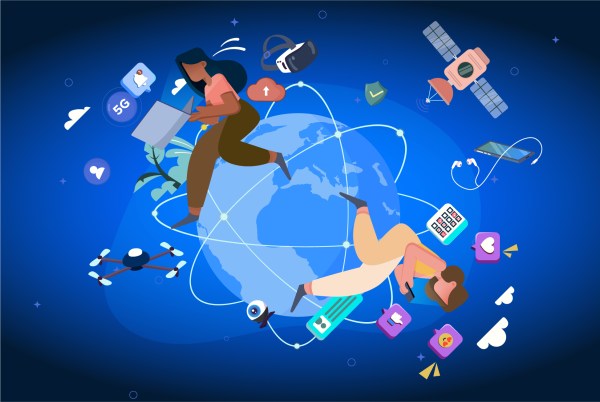- One of the main characteristics of the impact of digital life on 21st-century society is how the development of social media has changed the way we communicate.
- Education, the economy and work are other areas that have been changed and have had an impact on how digital life has been shaped.
Digital life refers to the set of experiences, relationships and activities that people have through digital technologies and which have undoubtedly brought about substantial changes in many aspects of today’s society.
The areas that have developed in parallel with the evolution of new technologies that shape digital life are vast, covering virtually every aspect of our daily lives.
Communication and social media
Social media emerged in the 1990s, although it would not take off until a few years later. However, beyond debates about its uses, it is clear that it is a phenomenon inherent to digital life that has completely revolutionised the way people communicate.
The first social network in history, SixDegrees, was launched in 1997 with the premise – and living up to its name – of being able to connect anyone in the world with anyone else in, at most, six steps. This was unimaginable by previous standards.
Regardless of how the most widely used social networks by the global population may evolve, what is undeniable is that the versatility offered by each of them due to their own characteristics has changed the way individuals communicate, moving it into a completely different realm from that which existed before the digital world.
Not to mention the enormous (almost infinite, in fact) range of possibilities for meeting people from anywhere in the world, something that was practically impossible before.
As proof that digital life is not static, but rather a dynamic phenomenon, social media has also evolved over time: from being linked to its use on desktop or laptop computers to extremely high usage on mobile phones, as demonstrated by the fact that social media applications are among the most downloaded apps.
Further proof of the impact of social media on today’s society is that, in parallel with its evolution, phenomena such as memes have grown in popularity. Although the concept was coined in 1976 by biologist, zoologist and science communicator Richard Dawkins, it has taken on a new dimension with its Internet version.
Education
The concept of digital education has gained importance in recent years, transforming and improving education in different ways.
Digital education applies to both formal and non-formal education and is characterised by the integration of different technologies, transforming learning through the development of digital skills.
Some characteristics of this type of education include geographical and schedule flexibility, personalisation, greater inclusivity and the ability to present more varied resources, which can result in a higher level of interest in certain topics.
Economy and work
From an economic and employment perspective, digital life has been accompanied by developments such as teleworking, the collaborative economy and new forms of consumption.
This phenomenon of digital transformation marks the evolution of digital life and is characterised by greater automation—or even hyper-automation—which allows for process optimisation and cost reduction.
Likewise, the possibility of “erasing” geographical boundaries can help businesses achieve larger market shares, which has a particular impact on SMEs.
The advancement of new technologies such as AI and Big Data can help to make more informed and strategic decisions through the analysis of large amounts of data, with the resulting optimisation of resources and increase in productivity.







